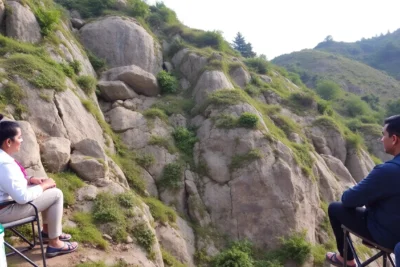
- The Ongoing Construction of the Sagrada Familia: A Historical Perspective
- Understanding the Architectural Challenges of the Sagrada Familia
- Funding and Resources: Why the Sagrada Familia Project Lags Behind
- Anticipating the Completion Date of the Sagrada Familia
- The Role of Antoni Gaudí in the Unfinished Masterpiece
- Cultural Significance of the Sagrada Familia in Modern Barcelona
The Sagrada Familia, a masterpiece designed by Antoni Gaudí, has captivated visitors for over a century with its intricate architecture and spiritual significance. Despite its global recognition and the millions of tourists it attracts each year, the basilica remains unfinished, raising questions about its long construction timeline.
This leads us to ponder: Why is the Sagrada Familia in Barcelona still not finished? Various factors, including financial constraints, the complexity of Gaudí's vision, and historical interruptions, have contributed to the ongoing construction. Each element plays a crucial role in determining when, or if, this iconic landmark will finally be completed.
The Ongoing Construction of the Sagrada Familia: A Historical Perspective
The construction of the Sagrada Familia began in 1882, initiated by architect Francisco de Paula del Villar, but it quickly became a project of passion for Antoni Gaudí, who took over in 1883. His vision transformed the basilica into a unique blend of Gothic and Art Nouveau styles. The historical context of the time, including the socio-political climate in Spain and the challenges of fundraising, significantly influenced the project’s timeline.
Over the decades, several key factors have affected the ongoing construction of the Sagrada Familia:
- Financial constraints: The basilica is funded entirely by private donations, which can fluctuate greatly.
- Complexity of design: Gaudí’s intricate plans require advanced techniques and a deep understanding of his vision.
- Historical events: The Spanish Civil War and subsequent interruptions halted progress significantly.
While the expected completion date has been pushed back numerous times, there is a renewed sense of optimism. The construction is currently focused on key elements, such as the completion of the central towers, which will further enhance the basilica’s iconic skyline. The anticipated completion year is now projected for 2026, coinciding with the centenary of Gaudí's death. This date symbolizes a hopeful milestone in the long history of this architectural marvel.
Looking forward, the ongoing work highlights the importance of preserving Gaudí's legacy while integrating modern construction technologies. The Sagrada Familia stands not only as a testament to the artistry of its creator but also as a symbol of resilience and dedication to a vision that transcends time.
Understanding the Architectural Challenges of the Sagrada Familia
Understanding the architectural challenges of the Sagrada Familia involves recognizing the unique vision of Antoni Gaudí, which was not only ambitious but also profoundly complex. One of the primary obstacles is the innovative techniques Gaudí employed, which often require modern adaptations to bring his designs to life. This includes utilizing materials and methods that were not available during the original conception of the basilica, contributing to delays and complications in construction.
Another significant challenge is the scale of the project. The Sagrada Familia is planned to have 18 towers, each representing different biblical figures. The construction of these towers demands meticulous planning and precision, and the architectural team faces the additional task of ensuring that each element harmoniously fits into Gaudí's grand design. The following are key aspects of this challenge:
- Structural integrity: Ensuring that the intricate designs can withstand natural elements.
- Artistic coherence: Maintaining Gaudí’s artistic vision throughout the prolonged construction timeline.
- Technological advancements: Incorporating modern tools while respecting traditional craftsmanship.
Furthermore, the integration of advanced construction technologies has become essential in overcoming these architectural hurdles. Techniques such as 3D modeling and computer-aided design allow builders to visualize and plan each component of the basilica with greater accuracy. These technologies enable the team to tackle the complexities of Gaudí’s plans while ensuring that they remain true to his vision.
Lastly, the collaborative efforts of architects, engineers, and artisans from around the world contribute to navigating these architectural challenges. Their combined expertise is crucial in balancing the demands of modern engineering with the need to honor Gaudí’s legacy, making the ongoing construction of the Sagrada Familia a remarkable convergence of tradition and innovation.
Funding and Resources: Why the Sagrada Familia Project Lags Behind
The funding and resources allocated to the Sagrada Familia project have significantly impacted its construction timeline. With financing primarily sourced from private donations and ticket sales, the flow of capital can be unpredictable. This reliance on voluntary contributions means that the pace of construction is directly tied to the public's interest and generosity.
Several factors contribute to the ongoing challenges in securing adequate funding for the Sagrada Familia:
- Economic fluctuations: Changes in the economy can affect tourism and, consequently, the donations received.
- Global events: Situations like the COVID-19 pandemic have severely impacted visitor numbers, leading to reduced revenue.
- Competing projects: Other cultural initiatives may divert attention and funding away from the basilica.
Despite these hurdles, the construction team has adapted by implementing strategic fundraising campaigns and marketing efforts. Their goal is not only to complete the basilica but also to ensure that the funds are used responsibly and efficiently. Upcoming initiatives aim to enhance visitor engagement and generate sustained interest in the project.
While the Sagrada Familia’s construction may lag due to funding challenges, ongoing support demonstrates a collective commitment to preserving Gaudí's vision. Engaging the global community in this endeavor has become vital, as the project symbolizes not just an architectural feat but also a shared cultural heritage that transcends generations.
Anticipating the Completion Date of the Sagrada Familia
Anticipating the completion date of the Sagrada Familia has been a topic of debate for many years. While the initial projections aimed for a finish long before now, various unexpected challenges have pushed the timeline into the future. Currently, the proposed completion year is 2026, which marks the centenary of Antoni Gaudí's death, infusing this date with significant emotional and historical weight.
The ongoing construction relies heavily on the momentum built from consistent funding and public interest. As the project progresses, several crucial phases remain, including the installation of elaborate facades and the iconic towers. Ensuring that each element aligns with Gaudí's original vision is essential, prompting the team to embrace a combination of traditional techniques and modern innovations in construction.
Recent advancements in technology, such as 3D modeling, have allowed architects to visualize and adapt Gaudí’s intricate designs more effectively. This approach not only helps in addressing the complex structural requirements but also ensures that the artistry remains intact. The collaborative effort among various professionals has been instrumental in keeping the construction on track towards the anticipated completion.
As the world looks forward to the finished basilica, there is a shared sense of anticipation within the global community. The Sagrada Familia is not merely a construction project; it represents a collective dedication to preserving a unique cultural heritage. The completion of this architectural masterpiece promises to be a moment of celebration, reflecting not just Gaudí's genius but also the enduring spirit of those committed to realizing his dream.
The Role of Antoni Gaudí in the Unfinished Masterpiece
Antoni Gaudí's role in the Sagrada Familia is pivotal, not only in its design but also in shaping its very identity. Taking over the project in 1883, he introduced his unique architectural style, merging Gothic and Art Nouveau elements, which has become synonymous with the basilica. Gaudí's visionary ideas included intricate façades and towering spires, all deeply rooted in his understanding of nature and spirituality, which set a high bar for the construction that continues to this day.
As the primary architect, Gaudí meticulously crafted detailed plans and models that illustrate his ambitious vision. His innovative techniques, such as using catenary arches and hyperboloid structures, were groundbreaking and remain a challenge for modern builders. The complexity of his designs necessitates a profound commitment to authenticity, ensuring that every element adheres to his original intentions. This commitment significantly contributes to the ongoing nature of the construction.
Unfortunately, Gaudí’s untimely death in 1926 left many of his plans incomplete, leading to challenges in interpreting his vision. Subsequent architects have relied on his existing models and sketches, which sometimes lack clarity or detail. Moreover, the evolution of technology and construction methods over the years has introduced further complications, requiring a delicate balance between maintaining Gaudí’s style and utilizing modern techniques. The quest to honor his legacy continues to shape the project as it moves forward.
Ultimately, Gaudí's influence on the Sagrada Familia extends beyond mere architecture; it encompasses a broader cultural and artistic legacy. His unique approach to integrating natural forms into architecture has inspired countless artists and architects worldwide. As the basilica nears its anticipated completion in 2026, it stands as a testament to his genius and the collaborative efforts of those dedicated to realizing his vision, making it a true masterpiece of human creativity and perseverance.
Cultural Significance of the Sagrada Familia in Modern Barcelona
The Sagrada Familia holds profound cultural significance in modern Barcelona, serving as a symbol of the city’s artistic heritage and its architectural innovation. As a UNESCO World Heritage Site, it attracts millions of visitors each year, contributing to both local and national identity. The basilica not only represents the genius of Antoni Gaudí but also embodies the spirit of a city that embraces creativity and tradition. The ongoing construction signifies a commitment to preserving this exceptional piece of heritage for future generations.
Moreover, the Sagrada Familia has become a focal point for various cultural events and activities, strengthening community ties and fostering a sense of belonging. It serves as a venue for religious ceremonies, art exhibitions, and educational programs that engage visitors in understanding both the architectural intricacies and the spiritual messages conveyed through Gaudí's work. These activities enrich the cultural landscape of Barcelona, making the basilica a living part of the city’s narrative.
Additionally, the impact of the Sagrada Familia extends beyond its walls, influencing contemporary artists and architects. Its unique design elements inspire a new generation of creators who are drawn to Gaudí's innovative use of natural forms and light. The basilica stands as a testament to the idea that architecture can transcend its functional purpose, serving as a canvas for artistic expression. This ongoing relevance keeps the discourse around the Sagrada Familia vibrant and dynamic.
In the broader context, the Sagrada Familia also plays a crucial role in Barcelona's economy, particularly in the tourism sector. The influx of visitors not only supports local businesses but also underscores the economic value of cultural heritage sites. The collaboration between ongoing construction efforts and community engagement initiatives highlights the importance of maintaining such landmarks, ensuring they remain integral to the city's character and vitality.
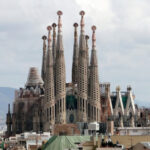 The Magnificent Sagrada Familia: A Brief Overview from Wikipedia Deutsch
The Magnificent Sagrada Familia: A Brief Overview from Wikipedia Deutsch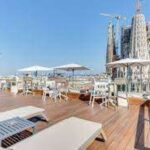 Discover the Ibis Barcelona Sagrada Familia: A TripAdvisor Top-Rated Stay in Barcelona
Discover the Ibis Barcelona Sagrada Familia: A TripAdvisor Top-Rated Stay in Barcelona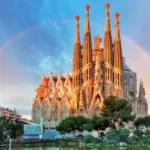 Convenient Western Union Services at Sagrada Familia Barcelona |94
Convenient Western Union Services at Sagrada Familia Barcelona |94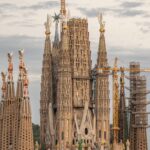 The Sagrada Familia in Barcelona: When Will it Be Finished?
The Sagrada Familia in Barcelona: When Will it Be Finished?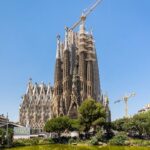 The Astonishing Completion Date of La Sagrada Familia in Barcelona
The Astonishing Completion Date of La Sagrada Familia in Barcelona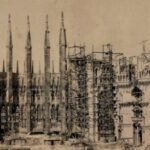 The Remarkable Construction Time of Sagrada Familia in Barcelona
The Remarkable Construction Time of Sagrada Familia in BarcelonaIf you want to know other articles similar to Why is the Sagrada Familia in Barcelona still not finished? you can visit the category Blog.
Deja una respuesta

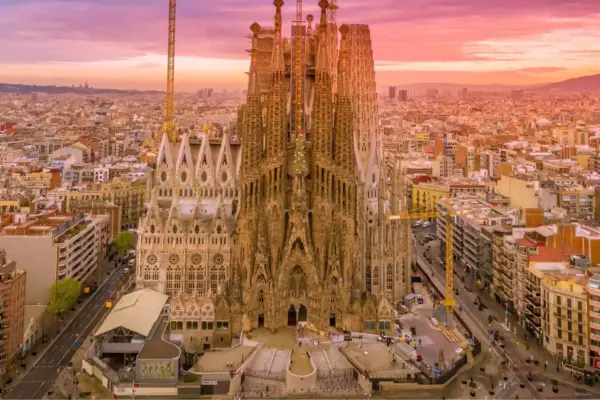
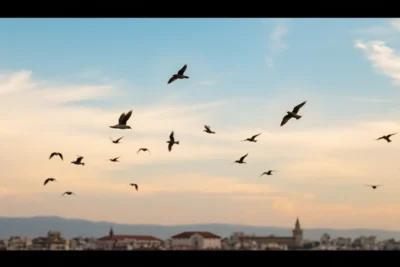



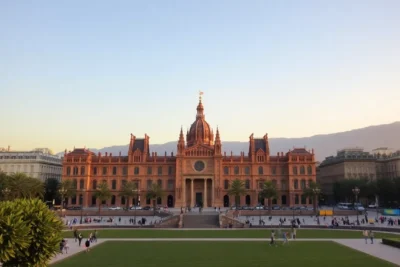

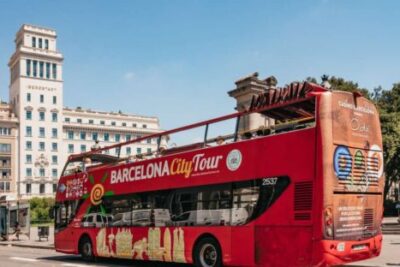
Read more!